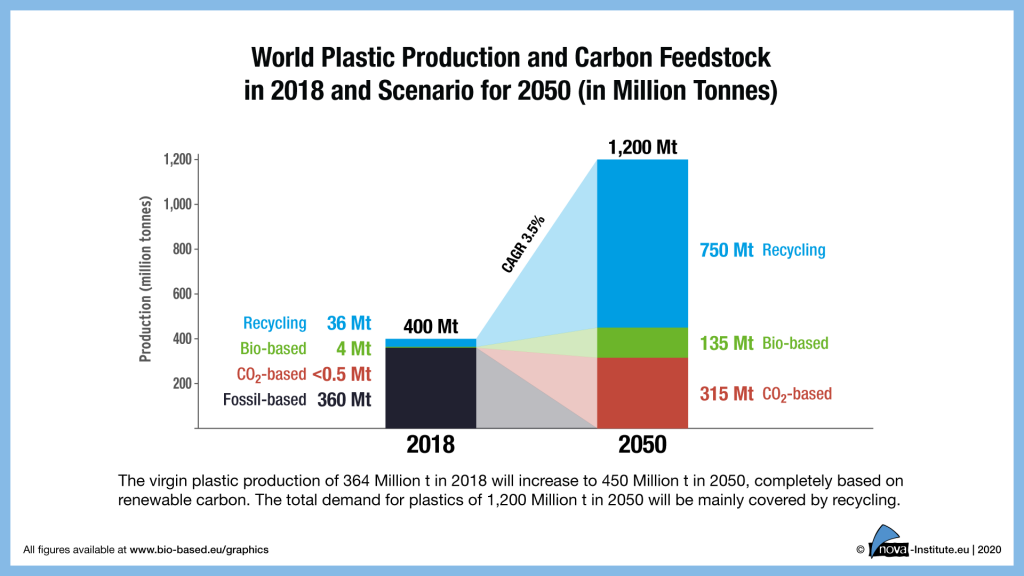The twelfth edition in the nova-Paper series outlines the cornerstones of the transition from fossil carbon to renewable carbon for all organic chemicals and materials.
Visuals, German version and PDF file available at: www.nova-institute.eu/press/?id=218
In order to fight climate change, we need to curb our consumption of fossil resources. The renewable carbon strategy, outlined in this “nova-Paper #12″, addresses the core problem of climate change, which is extracting and using additional fossil carbon from the ground. The paper is a reaction to the increasing need for reform in the chemical industry and offers a comprehensive approach for policy and industry alike.
In the energy sector “decarbonisation” strategies are being implemented to end the use of fossil carbon. However, this approach is not feasible for organic chemistry, which is defined by the use of carbon.

The authors emphasize that industry has to go beyond just using renewable energy. All fossil carbon use has to end, as the carbon contained in the molecules of organic chemicals and materials is prone to end up in the atmosphere sooner or later. Only a full phase-out of fossil carbon will help to prevent a further increase in CO2 concentrations.
The equivalent to decarbonisation in the energy sector is a transition to renewable carbon in the chemical and plastics industries. The paper defines renewable carbon as such:
Renewable carbon entails all carbon sources that avoid or substitute the use of any additional fossil carbon from the geosphere. Renewable carbon can come from the biosphere, atmosphere or technosphere – but not from the geosphere. Renewable carbon circulates between biosphere, atmosphere or technosphere, creating a carbon circular economy.
The vision is stated clearly: By 2050, fossil carbon shall be completely substituted by renewable carbon, which is carbon from alternative sources: biomass, direct CO2 utilisation and recycling. This fundamental change in the chemical industry is seen as the only way for chemicals, plastics and other organic materials to become sustainable, climate-friendly and part of the circular economy – part of the future.
nova-Paper #12 gives a full and in-depth picture on renewable carbon and related strategies. It entails clear definitions, pro and cons of the different renewable carbon sources, a discussion of the huge market potential, scenarios for the chemical and polymer industries fully based on renewable carbon and political measures to support a quick transition to renewable carbon.
The paper is the background paper of the new “Renewable Carbon Initiative (RCI)” (www.renewable-carbon-initiative.com), launched on 23 September 2020, and the concept and ideas outlined in the paper are already bearing fruit. Eleven leading companies from six countries founded the initiative under the leadership of nova-Institute. The aim of the initiative is to support and speed up the transition from fossil carbon to renewable carbon for all organic chemicals and materials. More than 130 well-known experts support the initiative personally.
nova-Papers are proposals to stimulate the discussion on current topics of the renewable carbon economy, by creating new perceptions based on scientific facts and by inviting relevant stakeholders to participate in decision-making processes and debates.
Please download the full nova-Paper #12: “Renewable Carbon – Key to a Sustainable and Future-Oriented Chemical and Plastic Industry – Definition, Strategy, Measures and Potential” at www.bio-based.eu/nova-papers
Source
nova-Institut GmbH, press release, 2020-09-30.
Supplier
Share
Renewable Carbon News – Daily Newsletter
Subscribe to our daily email newsletter – the world's leading newsletter on renewable materials and chemicals









